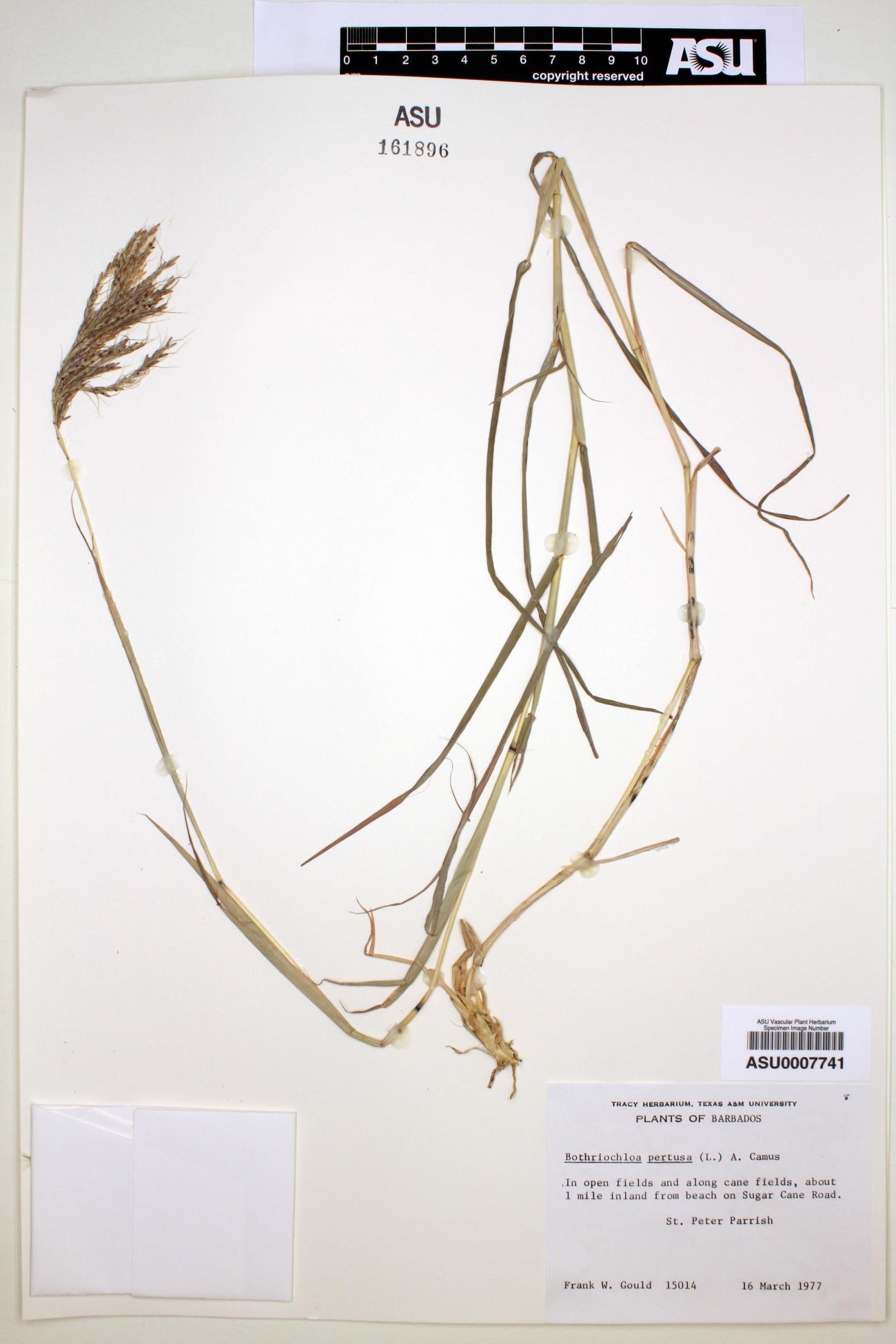
|
Family: Poaceae |
Plants perennial; cespitose or stoloniferous. Culms 30-250 cm, with pithy internodes. Leaves basal or cauline, not aromatic; sheaths open; auricles absent; ligules membranous, sometimes also ciliate; blades usually flat, convolute in the bud. Inflorescences terminal, panicles of subdigitate to racemosely arranged branches, each branch with (1)2-many rames, branches not subtended by modified leaves; rames with spikelets in heterogamous sessile-pedicellate pairs, internodes with a translucent, longitudinal groove, often villous on the margins; disarticulation in the rames, beneath the sessile spikelets. Spikelets dorsally compressed; sessile spikelets with 2 florets; lower glumes rounded, several-veined, sometimes with a dorsal pit, margins clasping the upper glume; upper glumes somewhat keeled, 3-veined; lower florets hyaline scales, unawned; upper florets bisexual; upper lemmas with a midvein that usually extends into a twisted, geniculate awn, occasionally unawned; anthers 3. Pedicels similar to the internodes. Pedicellate spikelets reduced or well-developed, sterile or staminate, unawned. Caryopses lanceolate to oblong, somewhat flattened; hila punctate, basal; embryos about 1/2 as long as the caryopses. x = 10. Name from the Greek bothros, trench or pit, and chloë, grass, alluding either to the groove in the pedicels or to the pit in the lower glumes of some species. |
This project was made possible in part by the Institute of Museum and Library Services [MG-70-19-0057-19].
Powered by Symbiota



